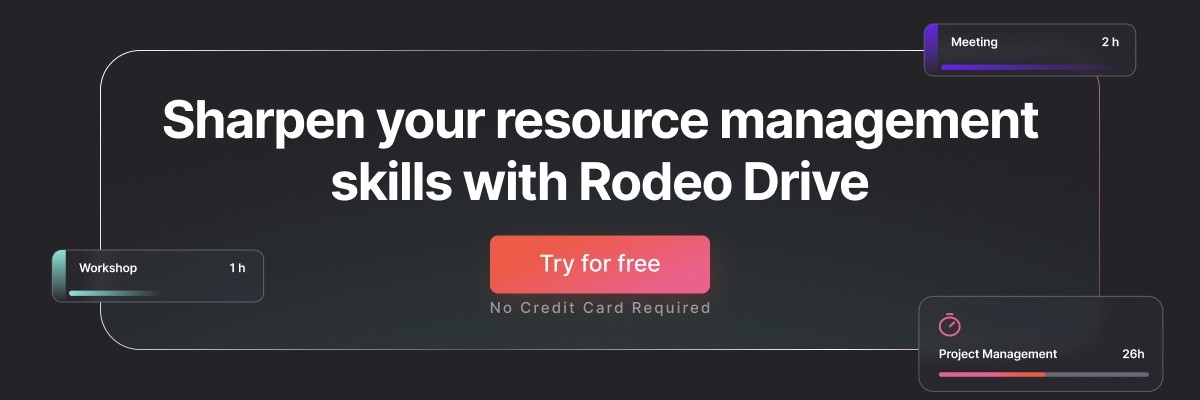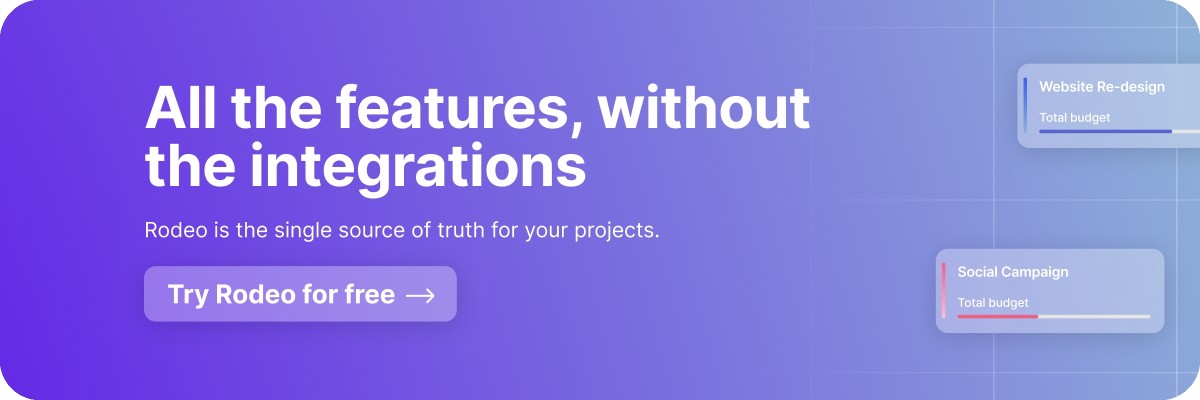What Is Project Resource Management? A Complete Guide for 2024
Projects run on resources. Time, people, budgets. If you’ve headed a project, you already know that resources come with constraints. Timelines aren’t infinite, people can experience burnout, and budgets overrun. It’s a tricky balancing act.
But, how you manage limited resources is the difference between project success and project headaches. So, it never hurts to get a refresher.
This article is your guide to resource management in 2024, with trends and tips that will help smooth out your projects and up your resource management game.
What is resource management?
Resource management is the planning, scheduling, and deployment of people, skills, time, and money to a project. Effective resource management ensures resources are available when they’re needed so that projects can move forward without bottlenecks.
Many project teams fail to properly manage and allocate their resources. The Project Management Institute reports that 35% of project failures are because of poorly managed resources.
But, by prioritizing resource management, organizations can significantly improve their project outcomes, increasing productivity and profitability along the way.
Resource management vs. project management
Project management is concerned with delivering the project as a whole. Resource management plays a role in that, so resource management can be understood as a discipline within project management.
But, whereas project management broadly focuses on completing tasks and project phases on time, resource management zooms in on how resources can be allocated so that those project management objectives are achievable.
This means resource management is not limited to assigning tasks. It’s also about how human talent, equipment, and financial assets can be aligned to improve project performance.
Resource management requires not only a grasp of the project’s scope but also insights into the capacity and limitations of the resources available. It also demands forecasting, scheduling, and reallocating resources as needed throughout the lifecycle of a project. Fortunately, plenty of software solutions can perform that laundry list of functions.
Good resource management also involves understanding the cost implications of resources. Knowing costs ensures that the project stays within budget and therefore profitable.

What are the types of resources in project resource management?
Now that you have an overview of resource management, let’s delve into the actual resources you’ll need to manage.
These resources are generally categorized into four main types: human, material, financial, and time. Let’s take a closer look at each.
Human resources
Human resources are the cornerstone of project resource management. This category includes the personnel involved in the project, with all their skills, knowledge, and expertise.
For resource management, human resources can range from individual professionals to entire project teams and can be engaged for the entire project duration or on an ad hoc basis. If people have skillsets that are critical to progress or scarce across your company, it’s important to manage their availability and avoid overallocation.
Related: Project Management Office: What It Is and Why It's Important
Materials and equipment
Material resources encompass the tangible elements required for a project. This includes raw materials, machinery, tools, equipment, software, and even office space.
Materials can be assets owned by the company or assets that need to be acquired to complete a project. Materials can be reusable or consumable. Efficiency managing them means considering the expenses they generate and when they are available over the project timeline.
Financial resources
Financial resources refer to the budget allocated for a project. This budget is typically established before the project begins and is used to finance human and material resources, including their acquisition, remuneration, and associated costs.
Tracking financial resources is crucial for ensuring that every project has the necessary runway to achieve its goals and stay profitable.
Time
Time is the duration available for completing each task in the project. Since projects operate on deadlines, there’s an inherent limit on time.
When projects exceed their deadlines, the consequence is consuming more resources than initially allocated. Costs go up past budgets, people are tied up, and other projects can have their timelines pushed back.
Everyone knows time is finite, and yet it still has a way of slipping away. 54% of workers spend 5+ hours per week on repetitive, low-impact tasks. Project management time-tracking tools can identify opportunities to recover time that would otherwise be lost.
For example, Rodeo Drive has a rich time-tracking interface that equips teams with the data to make the most out of their limited hours. From the time-tracking tab, team members can log hours spent on their activities.
![]()
Rodeo Drive's live time tracker
These hours are updated into automatically generated time reports within the platform so the project manager has an at-a-glance understanding of how much time has been logged by each team member.
.png)
Rodeo Drive’s automatically generated Time report
4 reasons why investing time into project resource management is important
Now that we’ve shared a bit more about project resource management, you might be wondering why it’s an important project activity that’s worth your time as a project manager.
Let’s explore the four reasons why it’s an exercise that’s worth your while:
1. Enhances project efficiency
The first benefit of streamlining resource management is to ensure resources are available on time.
When resources are scheduled correctly, projects can move smoothly between tasks and phases. Smoother workflows minimize disruptions, keeping projects in step with their timelines.
2. Reduces project costs
Preventing time waste directly impacts your bottom line. This is especially true for agencies or firms operating on billable hours.
Still, only 43% of companies reported completing their projects within the established budget. Often, this is the result of overestimating capacity or incorrectly allocating resources.
Resource management software helps optimize resource allocation by offering insights into underutilization, capacity, and project expenses. These capabilities reduce waste and give projects a better chance of staying on budget.
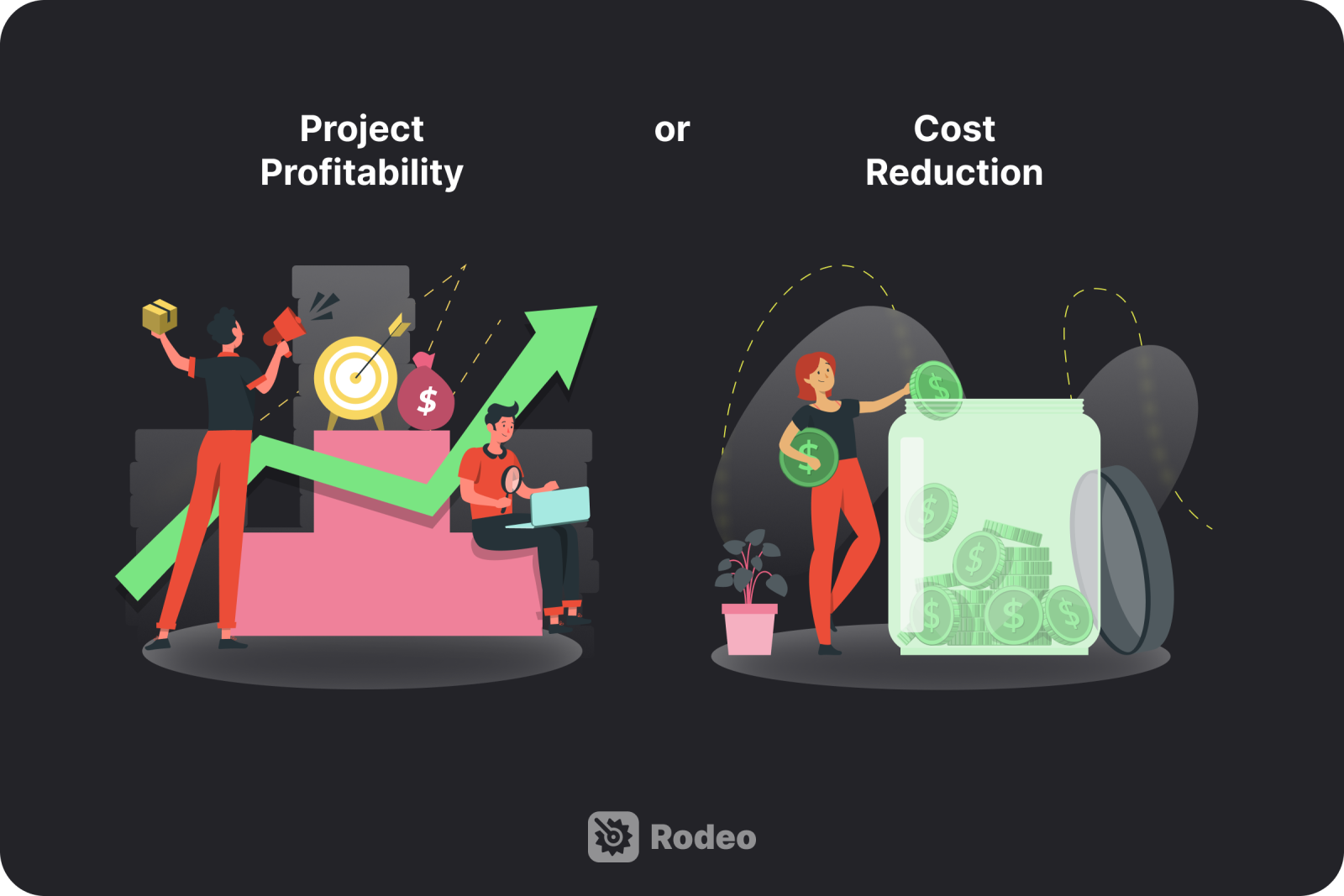
3. Mitigates project risks
Resource management involves proactively identifying resource constraints ahead of time. Through capacity planning, you can see whether you have allocated enough people and time to complete the tasks within set parameters.
Additionally, by calculating hourly rates and time activities beforehand, you can anticipate whether your project runs the risk of exceeding its budget.
For these reasons, resource management tools are a huge help in avoiding project pitfalls and accurately registering risk.
4. Improves project outcomes
The cumulative impact of strong resource management is an improvement in overall project success.
Teams with deep project management systems meet 77% of their goals while the average for other teams is 56%.
By ensuring that resources are available and efficiently utilized, effective project resource management contributes to timely completion, adherence to budget, and delivery of high-quality outcomes.
The 3 steps of the resource management process
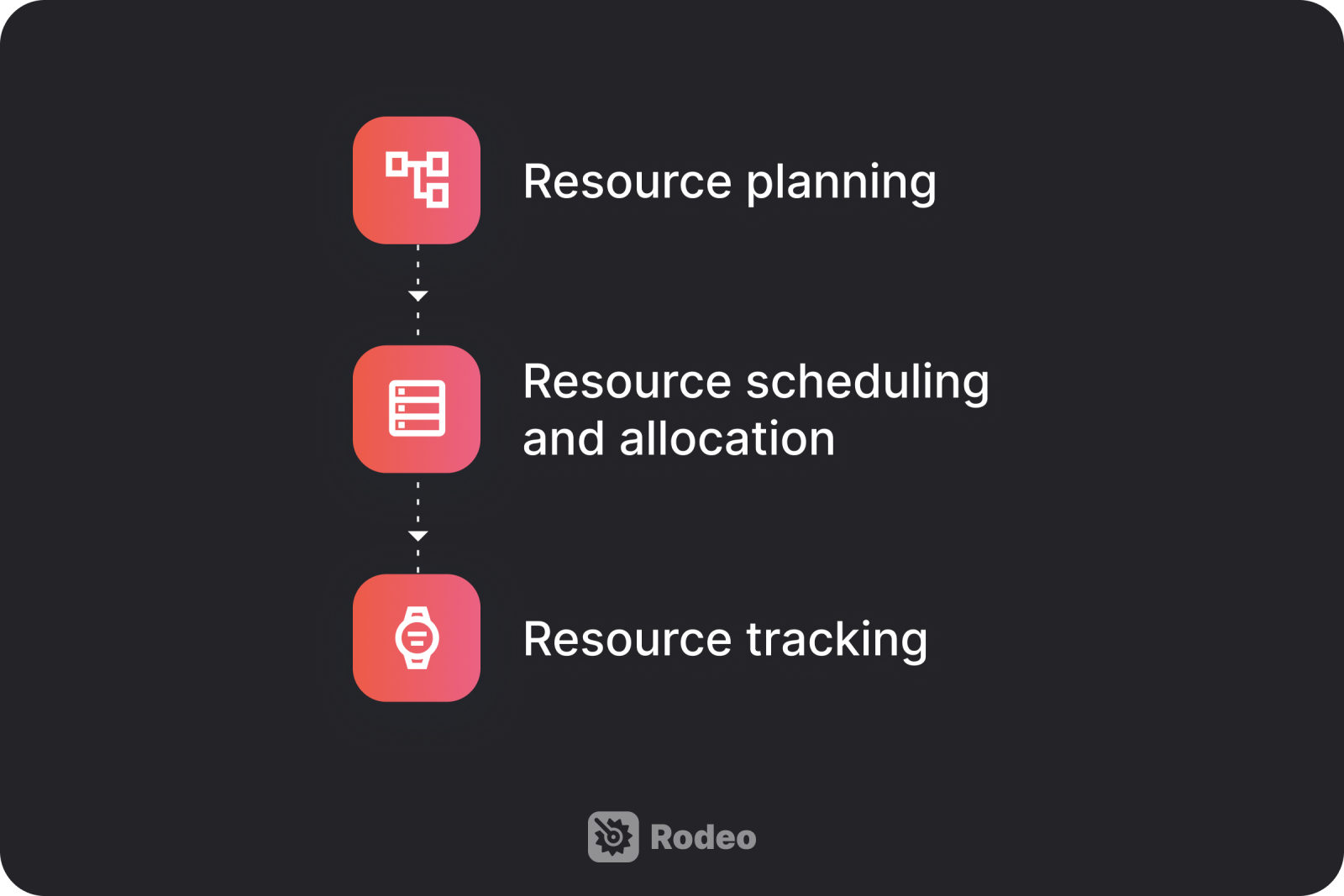
All this is to say that building a resource management process is a powerful investment in the success of your projects. Of course, what that process looks like will need to vary and adapt based on the needs of your organization and clients.
However, all resilient resource management processes include these fundamental steps:
Resource planning
Planning is the starting point in resource management. It starts with answering the following question: what project resources will your team need and how will those needs be met?
This can be further broken down into several more actionable questions.
- How much time will individuals on my team need to complete their tasks?
- Will specialized equipment be needed during certain phases of the project, and if so, when should we schedule that equipment so that it is available?
- Are there skill gaps that need to be addressed?
- Or are certain skill sets that are needed for the project limited to just a few people on your team, creating the potential for overutilization?
Resource management software can offer important clarity during the planning process. Using inputted data, it can forecast and alert project managers to potential hitches, and give them enough visibility over the overall project scope to analyze whether their planning is realistic.
Resource scheduling and allocation
Generally, resource planning can take place within resource scheduling tools, which are included in most resource management platforms.
Scheduling tools allow project managers to allocate resources, be it scheduling team members to tasks, assigning equipment based on need, overseeing availability and planned time off, or finding unscheduled work.
These tools also allow project managers to prioritize complex tasks by assigning more time to them from team members with domain expertise. Getting a project’s resource schedule lined up with tasks and milestones ensures that your team has the resources it needs for success.
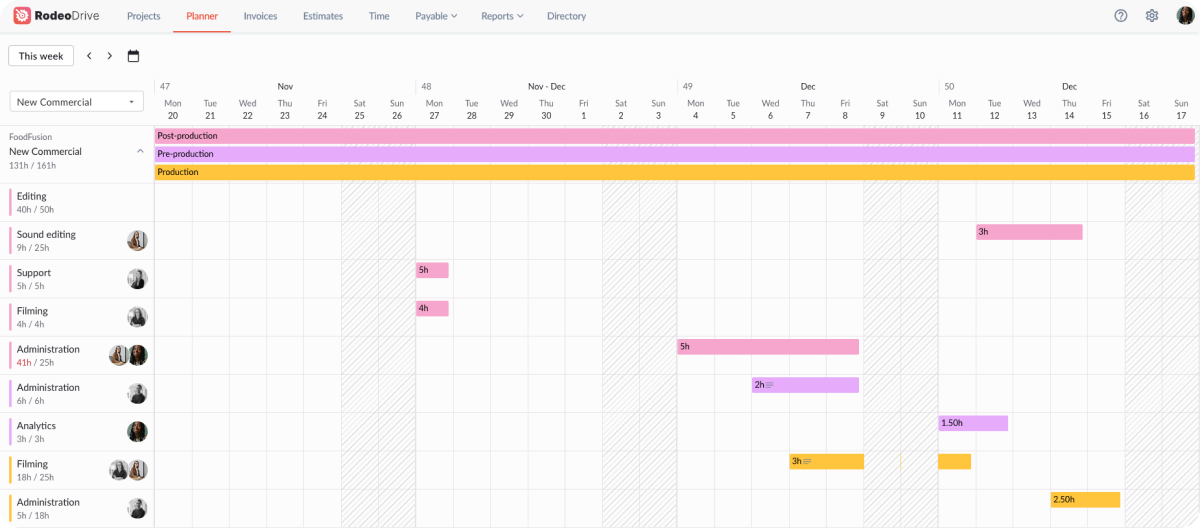
Rodeo Drive’s timeline-view project activity planner
Rodeo Drive’s activity planner includes scheduling linked to project budgets and time activities, allowing for sound plans that keep your team on track.
Resource tracking
No plan is perfect, so project managers need to have room to adapt. Resource tracking is the reporting of your team’s performance and use of resources during the actual runway of a project.
Resource management tools offer everything from productivity reports, and capacity forecasts, to issue reports so that you can troubleshoot problems and improve processes even when your project is moving at full speed.
Rodeo Drive’s resource management suite includes productivity and time-reporting features that can help you track and make the most out of your resources. Productivity reports in the platform allow you to view your team’s availability and utilization, allowing you to find unused hours and assign them to relevant tasks.
The necessary components of project resource management software
When selecting a project resource management tool that’s right for your team’s needs, you’ll want to make sure the one you choose offers the following capabilities.
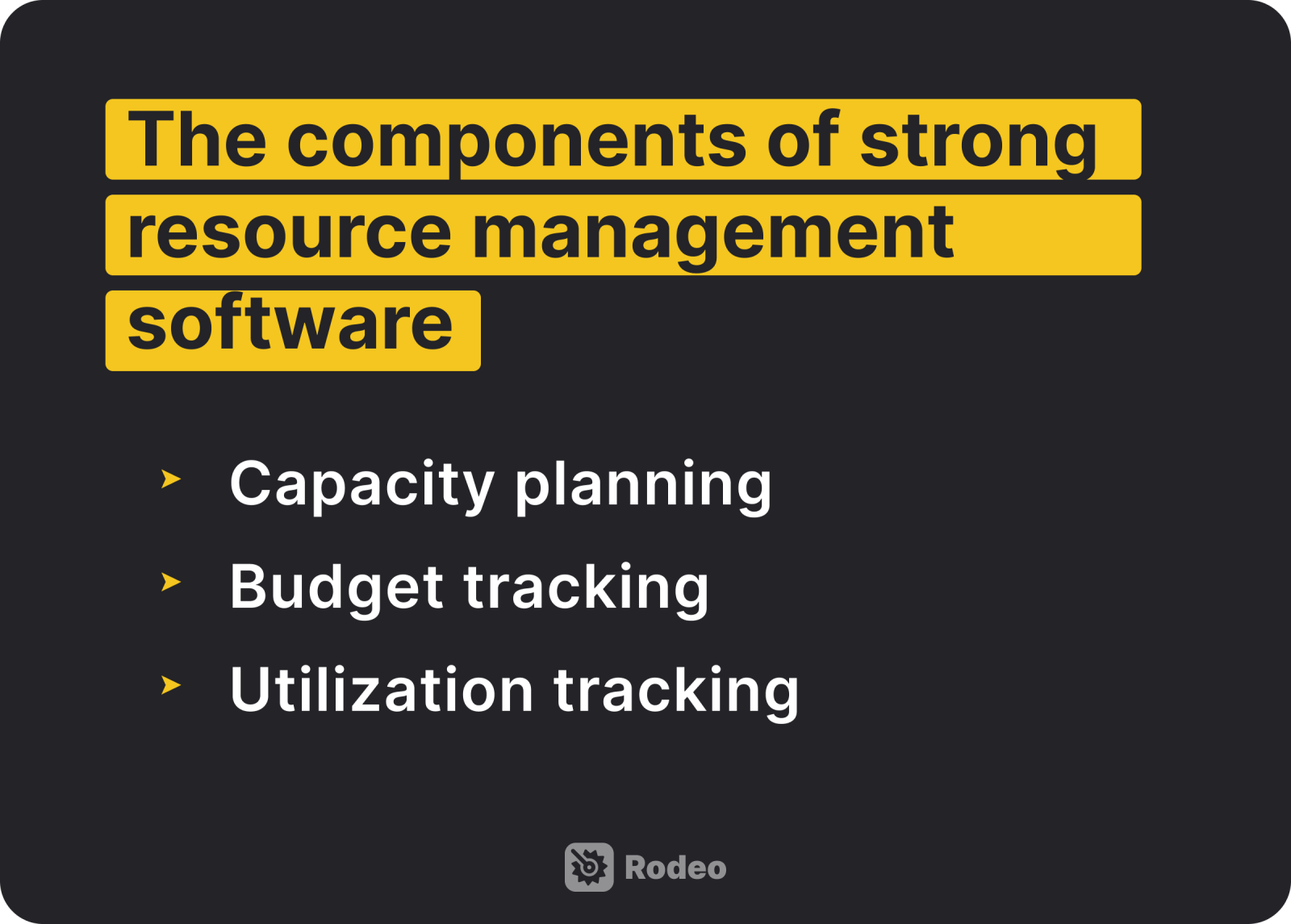
Capacity planning
Capacity planning in resource management refers to assessing and allocating resources so that a project can be completed within its constraints.
Capacity planning balances available resources with project demands, foreseeing potential resource shortages that make new commitments impossible.
Say a software company, for example, has a client requesting a new data pipeline. That software company already has other projects running in parallel, which also require the attention of their data scientists and software engineers.
The software company can use resource capacity software to first determine the utilization rates of all their data scientists and engineers, seeing which have slack and which are operating under tight constraints.
Then, they can match the scientists and engineers with the right skills and lowest utilization to that new project, without adversely affecting other projects.
Budget tracking
Budget tracking is the capability of software to keep track of the financial resources of a project. These could be features that compare planned expenses with actuals, track purchase orders, forecast future spending, or manage invoices.
Budget tracking is essential for monitoring the financial health of a project. Organizations often fail to account for the true cost of the time they spend on projects. As a result, they don’t account for those costs in the final pricing they give the clients, lowering the profitability of their projects.
Rodeo Drive allows all time activities to be tracked based on their cost, enabling projects to be accurately priced for maximum ROI.
Utilization tracking
Utilization statistics provide insights into how people are being used in a project. Most resource management solutions on the market offer straightforward reports to track utilization rates.
Those reports on team utilization help project managers ensure that people aren’t scheduled for too many projects leading to burnout, or underused leading to lower team effectiveness.
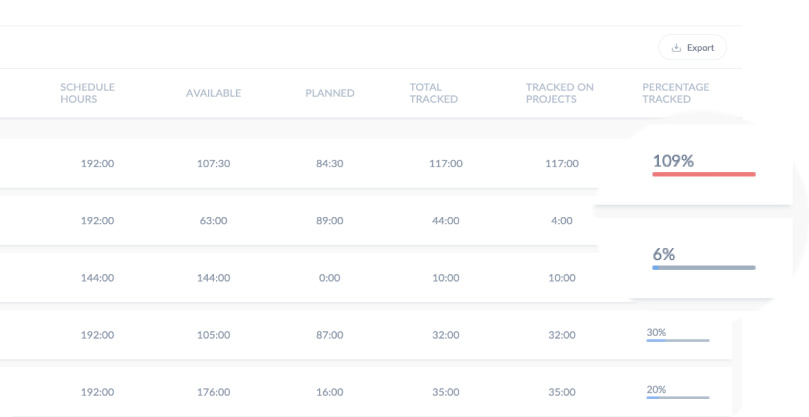
See scheduled utilization in Rodeo Drive
In an agency environment, for example, utilization rates can also be used to track how much time team members are spending on billable vs non-billable tasks. Team members can then be reallocated from non-billable tasks to billable tasks, keeping clients happy and improving productivity.
Techniques to correct resource allocation issues
Resource management never happens in a vacuum, so it’s good to have some contingencies for when things go wrong. Resource smoothing and resource leveling are two essential techniques for handling allocation challenges effectively.
Resource smoothing
Resource smoothing is an extension of task prioritization. Resource smoothing means delaying non-critical tasks and reallocating resources from lower-priority tasks to critical tasks so that the project can be completed on time.
Resource smoothing is applied when a project deadline is fixed and can’t be stretched. If for instance, a client needs a commercial and pictures for their upcoming ad campaign, and as an add-on requested brochures, smoothing might mean leaving the brochures alone to focus exclusively on the commercial and pictures.
Resource leveling
Resource leveling, on the other hand, is employed when there are flexible deadlines but not enough resources available.
If, for example, a web branding agency is creating a digital transformation for a client, and their programmers become suddenly unavailable, they might reassign the designers dedicated to website redesign to the client’s social media redesign instead.
Another example of leveling could be reallocating people from a component of the project that’s close to being completed ahead of time to another that is facing bottlenecks.
Accordingly, resource leveling can be used whenever there’s unevenness between resource demand and supply.
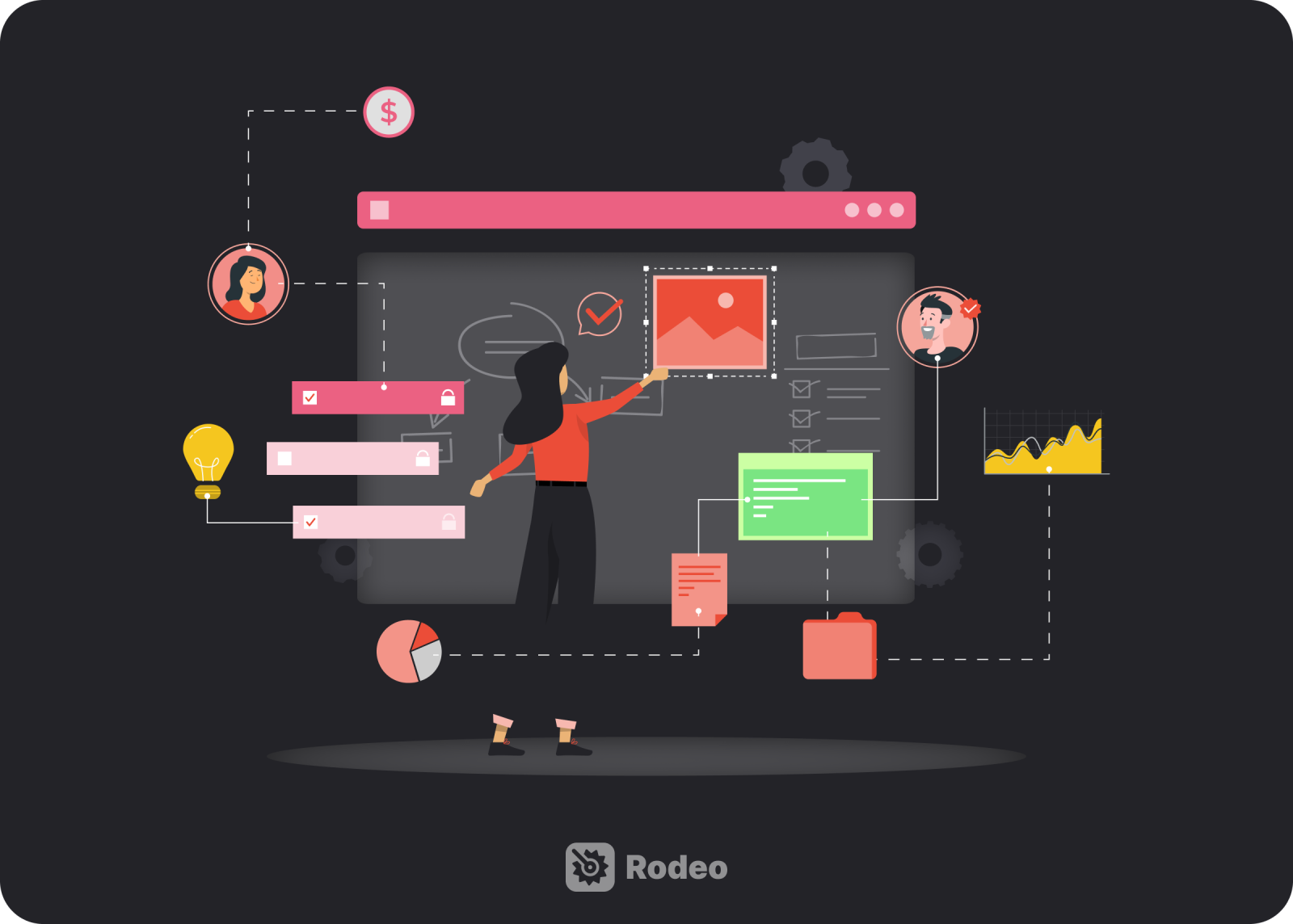
3 tips to keep in mind during resource planning
We’ve shared a lot of information on proper project resource management planning so far, but it can be a bit of a trial and error process for those who are new to it. That’s why we’ve compiled these three tips to keep in mind during your resource planning process:
1. Planning for 100% utilization can be a mistake
A common misstep is to aim for 100% utilization of resources. Overloading resources might seem like maximizing output, but it has the potential to backfire. In practice, this goal often leads to burnout and inflexibility when challenges emerge unexpectedly.
80-90% utilization is a more practical target, with several advantages. As a project manager, it gives you breathing room to make changes and recover from small mistakes. It also gives employees more breathing room, offering a boost to efficiency and team morale.
So, when you’re creating project plans, it’s a good idea to leave some utilization free.
2. Time is your most valuable resource
Time is a project’s most valuable resource. Implementing time-tracking systems like Rodeo Drive can significantly improve time management, and ensure that clients are billed accurately.
Tracking time can also help your organization get a better grasp of how long certain project tasks typically take, allowing you to optimize future projects with better resource allocation. Precise time management, therefore, not only enhances productivity but also helps in process improvement.
3. A resource management tool can significantly help
A resource management tool, like Rodeo Drive, can be an all-in-one solution for effective resource management.
Rather than building the processes on spreadsheets and documents, a resource management tool has all the solutions for resource planning, monitoring, and optimization built in.
Rodeo Drive has features that enable organizations to build a resource management process that scales. With the interactive planner, your team can plan capacity and get an easy, visual representation of where hours are committed.

Assigning a project activity in Rodeo Drive’s planner
Other features, such as Rodeo Drive’s real-time reporting, gives you the pulse of your team’s productivity. Letting you identify availability and opportunities to improve.
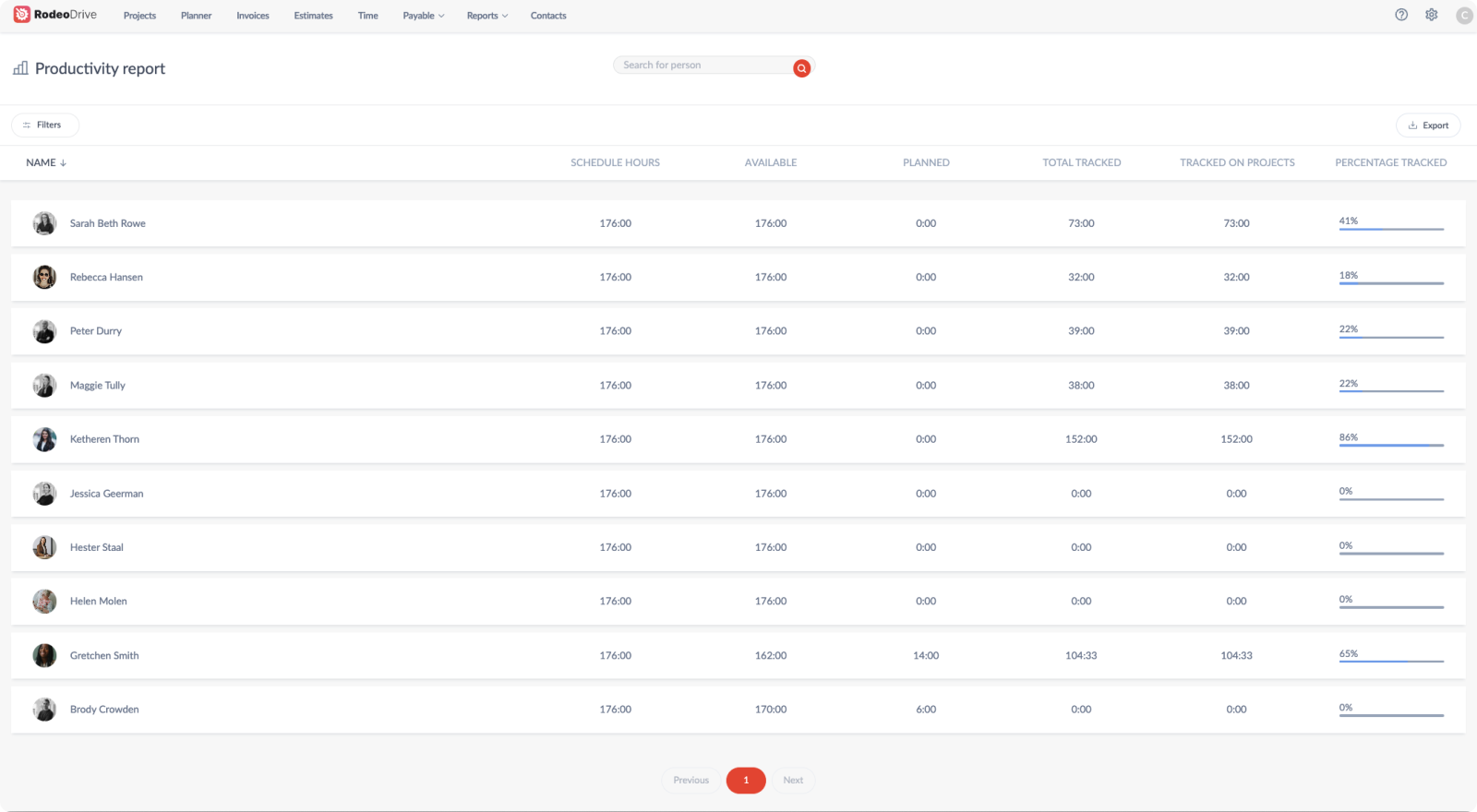
Productivity Reporting in Rodeo Drive
And finally, time tracking gives you all your billable hours in one place, so that you can price your projects right and ensure that your projects are profitable.
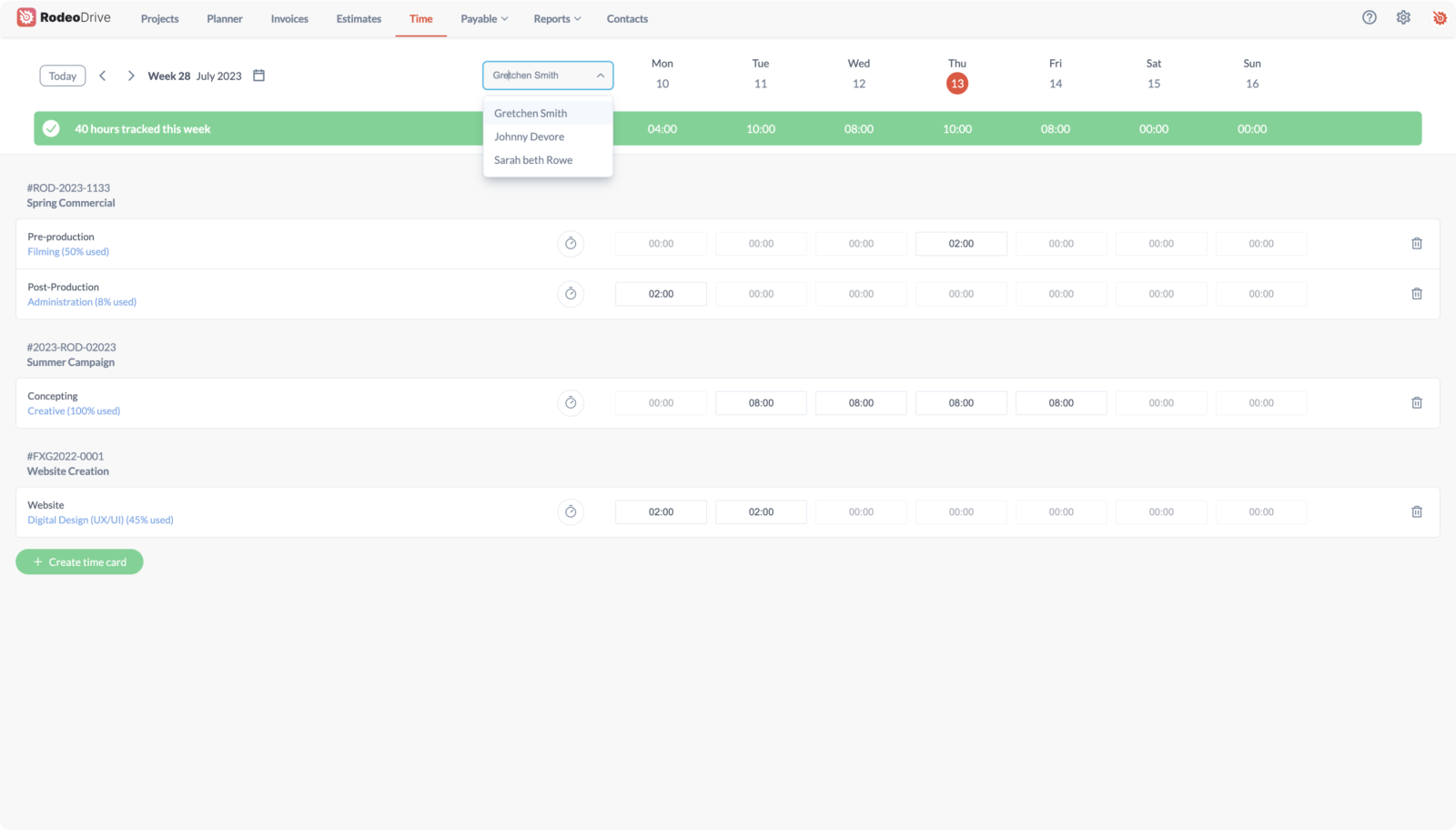
Time Tracking in Rodeo Drive
Ready for project management bliss? Try Rodeo Drive for free today –– you won’t even need to enter a credit card.





